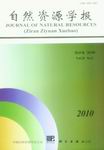Resources Ecology
XIONG Xing, JIANG Yuan, REN Fei-peng, DONG Man-yu, TIAN Yu-hong, LEI Yi-ming
Dongguan plays an great important role in the utilization of water resources around the Pearl River Delta and Dongjiang watershed. However, the rapid urbanization leads to severe land use change in this area. It’s necessary to realize land use change characteristics and especially its ecological effect on the water. This kind of research would improve our strategies making on the land use planning and water resources management.Based on the multi-temporal remotely sensed data in 1990, 2000 and 2009, this paper takes a research on the land-use change by using land-use change rate, land-use transfer matrix and land scope indicator. Then through several landscape indicators, the paper also describes water landscape and land-use landscape pattern in the buffer around the river and reservoir, in order to understand land-use change ecological effect to the water in Dongguan City. The conclusions can be drawn as follows:1) In recent two decades, the major land use type has changed into urban construction land from forest and agricultural land rapidly, the ratio of cropland, garden and forest has reduced from 23.56%, 13.39%, 28.73% in 1990 to 11.5%, 3.26%, 17.39% separately; while the urban construction land increases from 20.21% to 53.62% sharply, and the change rate of the land use during 2000-2009 is more severe than that in 1990-2000.2) The agriculture area decreased gradually, and the amount of fertilizer and pesticide use has been cut down by 58.30% and 32.35%, which means agriculture non-point source pollution reduces in recent period, meanwhile the increase of urban construction area leads to more urban non-point source pollution, this situation will be more aggravated accompanied with the expansion of urbanization and reduction in water area.3)Water landscape dominance decreases gradually, and water patch become more fragmentation and distributed;while in the reservoir and riparian buffer zone the proportion of construction land increases, and more artificial river channels lead to the reduction in the diversity of riparian habitat.On all accounts, Dongguan should strengthen the protection and management of water resource. In the water pollution control, based on the management of point source pollution, the city should enhance urban non-point source pollution prevention and control.
